This article was co-authored by Ken Breniman, LCSW, C-IAYT. Ken Breniman is a Licensed Clinical Social Worker, Certified Yoga Therapist and Thanatologist based in the San Francisco Bay Area. Ken has over 15 years experience of providing clinical support and community workshops utilizing a dynamic combination of traditional psychotherapy and yoga therapy. He specializes in eclectic non-denominational yoga guidance, grief therapy, complex trauma recovery and mindful mortal skills development. He has a MSW from Washington University in St. Louis and an MA Certification in Thanatology from Marian University of Fond du Lac. He became certified with the International Association of Yoga Therapists after completing his 500 training hours at Yoga Tree in San Francisco and Ananda Seva Mission in Santa Rosa, CA.
There are 9 references cited in this article, which can be found at the bottom of the page.
This article has been viewed 263,763 times.
Sometimes a death occurs when you aren’t particularly close to the person, but you still want to pay your respects. If a teacher, friend’s parent, or other person in your community dies, it’s nice to express sympathy to the family and honor the deceased. Pay respects by attending any memorial services for the person and offering condolences to their loved ones. Afterwards, it can be helpful to follow a few practices to remember the person.
Steps
Attending the Memorial
-
1Get the important information. Find out from family members, close friends, or members of the community when the memorial service will be held. If the person who died was a pillar in the local community, information about their services may be posted in the local newspaper.
- Make sure you know when and where the service will be held. Review the directions ahead of time to avoid getting lost and arriving late.
-
2Send flowers. Across many cultures and religions, a common way to pay respects is to send flowers. Plus, if you are unable to attend the memorial, sending flowers lets the person's loved ones know that they are in your thoughts.[1]
- Look online or visit your local florist to choose a nice arrangement. Have them sent to the funeral home so that they are there prior to the memorial.
- If you are sending flowers from a long distance, it may be helpful to contact florists in the person's area to have them send over your flowers.
- Local and online florists can guide you on choosing and ordering arrangements that are designed specially for memorials.
- A donation can be an alternative to flowers. Making a donation in the deceased’s name to a cause they cared about is a nice gesture. Check the obituary, as this is sometimes specified there.
Advertisement -
3Ask someone to join you for support. If you have never attended a funeral, or if you are a bit shaken by the death, it may be a good idea to bring someone with you. A parent, sibling, or friend can accompany you to the memorial and offer comfort if you need it.
- Another good option is to go with someone who has a similar relationship with the deceased as you. For instance, you might go with another classmate, if a teacher has died. Or, you might attend a friend’s parent’s funeral with another mutual friend.
-
4Arrive on time and dressed appropriately. Be respectful and proper by arriving to the memorial service on time. Aim to arrive at least 15-30 minutes before the service begins. Also, dress appropriately. It used to be common practice to wear black. That’s no longer necessary, but you should wear subdued clothing.[2]
- Do some research before you dress. If the person followed a certain religion, you might look to see if there are general expectations for clothing in that place of worship.
- Go for solid-colored clothing choices in mute shades like navy, burgundy, or grey as a rule. Avoid bright colors and busy prints or patterns. Also, try to be modest—don’t wear anything too revealing, such as low-cut tops or mini skirts.
- If you are attending a wake or viewing, the attire might be more relaxed or casual. Still, stick to subdued colors. Also, if you are going to a viewing, you can arrive at any time and approach the casket. Just make sure you greet the person's loved ones before viewing the body.
-
5View the body, if you want. It is typical for everyone at the memorial service to pay their respects by viewing the body. This may take place before, during, or after the service. If you want to see the deceased one last time, you may go up when directed and view the body. If you don’t want to take part in this practice, remain seated.[3]
- In some situations, a viewing, or wake, may be held immediately before the memorial or on a separate day. Wakes are usually more intimate but allow you to come and go as you please. The funeral itself, on the other hand, is more anonymous but requires you to be present for the entire service.
Showing Sympathy to Their Loved Ones
-
1Offer your condolences. Typically, after the service, mourners may line up to express their condolences to close family and friends of the deceased. When it’s your turn, keep it simple and straightforward. Go for something like “I am so sorry for your loss.”[4]
- If you are attending a wake or viewing, you will typically greet and console the person's family before viewing the body.
- Don't worry about saying the perfect thing to comfort the family and friends of the deceased. The important thing is that you care and you're trying.[5]
-
2Skip the empty or religious platitudes. In an attempt to comfort the bereaved, some people communicate phrases like “Everything happens for a reason” or “God makes no mistakes.” Even if they are well-intended, such platitudes may offend close family, especially if they do not share the same religious or spiritual beliefs.[6]
- Avoid phrases that minimize the person's experience, like "I know how you feel." Even if you have lost someone, too, this day is not about your own loss. Focus on the person who has died only instead of comparing their death to someone else's.
- If you know the person is religious, it may be appropriate to communicate sincere words, like "I am praying for you and your family."
-
3Relay a fond memory. If you want to say more, it can be thoughtful to communicate a fond memory you have of the bereaved. This reminds them of the good times the person had, or of their kindness or compassion.[7]
- For example, you might say, “Ms. Henry, I am truly sorry for your loss. Mr. Henry was such a caring man. I’ll never forget that time he pulled over in the rain to help me with a flat tire. He was one of a kind.”
-
4Offer your help. You can show your sympathy in a practical way by offering to help the family. When people are grieving, basic chores like cooking, cleaning, or picking up groceries may be left undone. They can be overwhelmed and too uncomfortable to ask for help. Offer to come by the family home and help out as needed if you are close to the family, or make an unsolicited gesture of aid like bringing food.[8]
- Make your intentions to help clear, such as saying, "I'll come by on Tuesday to help with cleaning or cooking." Pitching in with housecleaning, chores, or yard work can be helpful during this time.
- In addition, you might drop off prepared foods like casseroles or sandwiches to ensure the family has food to eat. Other helpful gifts might include plastic or paper utensils, trash bags, paper towels, and household items, since the family may be hosting many guests.
- You might also ask someone close to the family what holes exist in their needs. Take the initiative.
- Oftentimes, everyone is supportive of mourners immediately after the death, but this support fades as time goes on. For this reason, stay in touch with the family and continue to help out in the weeks after the funeral.
-
5Be brief. After you have expressed your condolences, said something kind about the deceased, and offered to help, move along. Everyone is hoping to talk to the family, so don’t hold them up for too long.
- You may leave your number with someone and suggest that they call you later if they’d like to talk more.
-
6Send a card. If you are unable to attend the memorial service, it is appropriate to send a thoughtful card or note in your absence. Choose a card that offers your condolences and then add a brief message telling the family that you will come by for a visit soon.
- You might write a simple message on your card, such as "I am thinking of you and your family during your time of grief."
- You might have your card mailed to the site of the memorial (with flowers) or you might send it to the person's family home, if you are close to the family.
- Respect the family’s wishes and space. Some might welcome a personal visit, but others may want to grieve privately and be alone for a time.
Remembering the Deceased
-
1Visit the burial site. In the days and weeks after the funeral or memorial service, you can pay your respects by visiting the graveyard or crypt where the deceased was laid to rest. It is generally acceptable to bring flowers or other mementos of the dead. This is a great way to privately honor the deceased.[9]
-
2Reminisce with others who knew the person. If you are close to the bereaved, it may be comforting to you and others to talk about the deceased. Do this on a case-by-case basis, as some people may want to talk about the person and others may not.
- Talk about the great times you had with the person, and relay the qualities about them you will miss. If you want, you may try to keep it upbeat by telling funny stories about experiences you shared with the deceased.
-
3Write down your memories. You might also consider writing down your memories of the deceased or even making a journal of notebook of these remembrances. Include things like their traits and qualities as a person, things you did together, happy memories you have of them, or reminisce about funny stories that involve them.
- Creating a journal can be a useful grieving technique for people who process things visually rather than verbally. It can also help you explore why you might be so affected by a person’s passing.
-
4Start a new tradition to honor the person. If you want to continue to pay respects to the deceased after their memorial service, you can implement a ritual that helps you keep the person’s memories alive. For instance, if a teacher who loved chocolate chip cookies died, you might bake them each month on the anniversary of their death.[10]
- You might also ask other mourners to join you. For instance, you might go to lunch every other Friday at the person’s favorite restaurant.
- Doing activities that you used to do with the deceased can help you continue to feel close to them even after their death.[11]
References
- ↑ http://foxandweeks.com/funeral-etiquette/
- ↑ https://www.everplans.com/articles/what-to-wear-to-a-funeral-or-memorial-service
- ↑ https://www.everplans.com/articles/what-to-expect-when-attending-an-open-casket-funeral
- ↑ http://www.chicagotribune.com/lifestyles/sc-fam-0124-funeral-etiquette-20120124-story.html
- ↑ Ken Breniman, LCSW, C-IAYT. Licensed Clinical Social Worker & Certified Yoga Therapist. Expert Interview. 24 April 2020.
- ↑ http://www.huffingtonpost.com/daniela-tempesta-lcsw/the-perils-of-platitudes-_b_10620156.html
- ↑ http://www.personalitytutor.com/what-to-say-when-someone-dies.html
- ↑ https://www.everplans.com/articles/how-to-show-your-support-beyond-the-funeral
- ↑ http://www.goodtherapy.org/blog/creating-rituals-to-move-through-grief/
About This Article
When someone you know dies, it’s polite to pay your respects to their family and honor their memory. To pay your respects to their family, you can send a condolence card or flowers. Alternatively, send some pre-prepared meals, since they might be too busy or down to cook for themselves. You can give these to the family yourself if you live nearby or arrange for them to be delivered by a courier. If you’re going in person, say something like, “I’m so sorry for your loss.” Then, offer to help if they need assistance with anything. You can also briefly share a fond memory of their loved one, like, “I’ll never forget the time he helped me fix my car in the rain.” If you’re invited to the memorial or wake, you’ll usually have an opportunity to say goodbye to the deceased. You don’t have to do this, but if you want to, just go up to the casket when directed and say goodbye. For more tips from our co-author, including how to start a tradition to honor the deceased, read on.
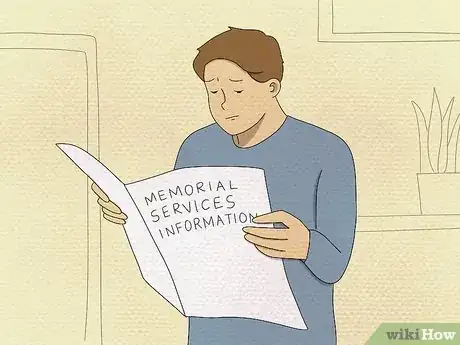
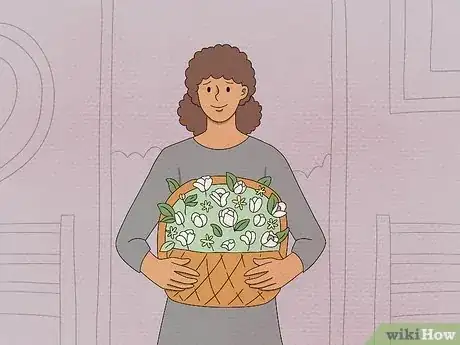

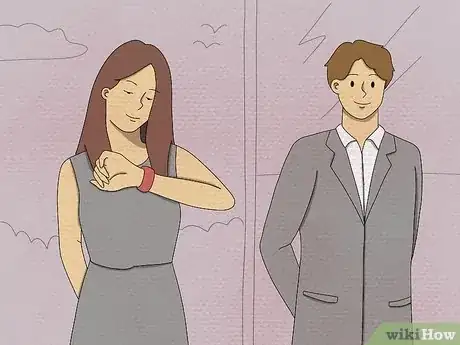
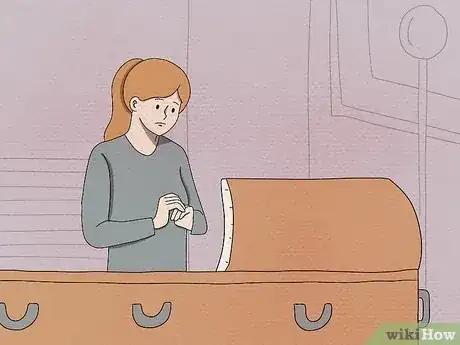


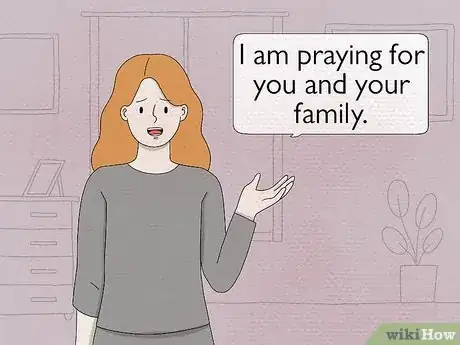
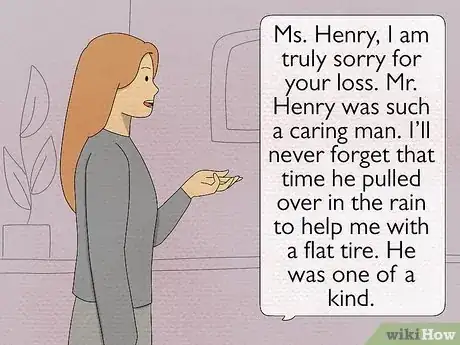
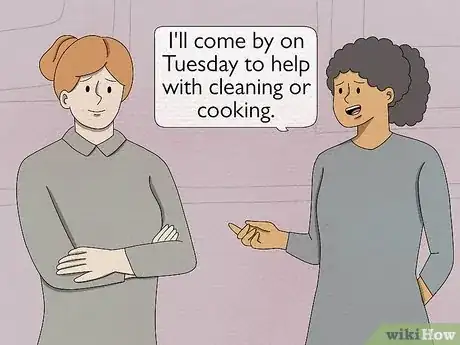

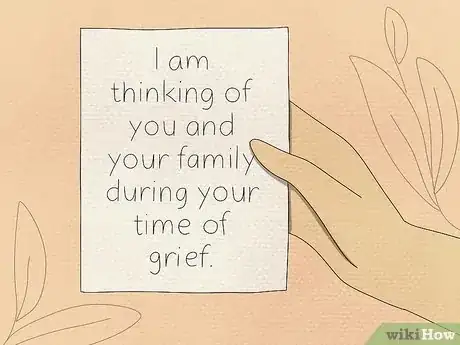
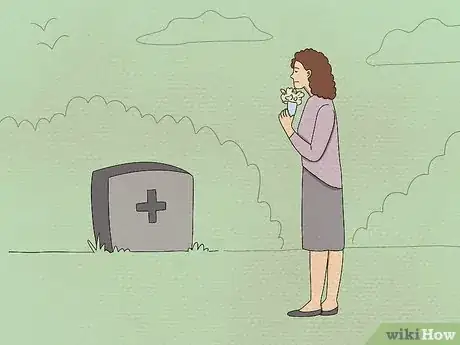
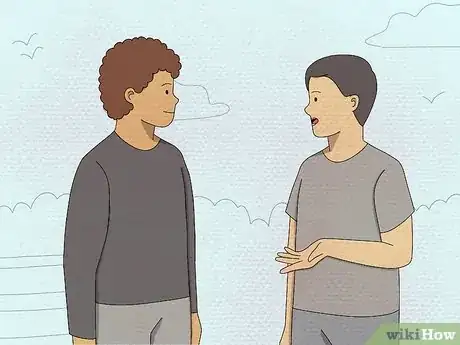

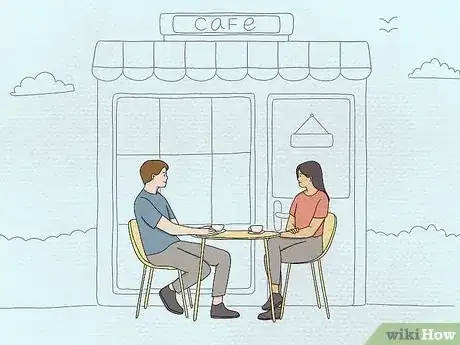

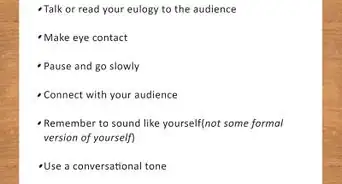

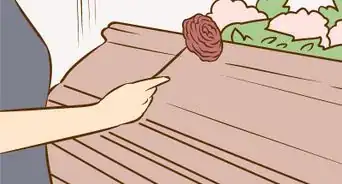


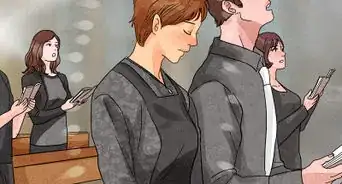
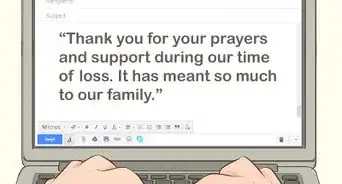


-Step-20-Version-2.webp)















































